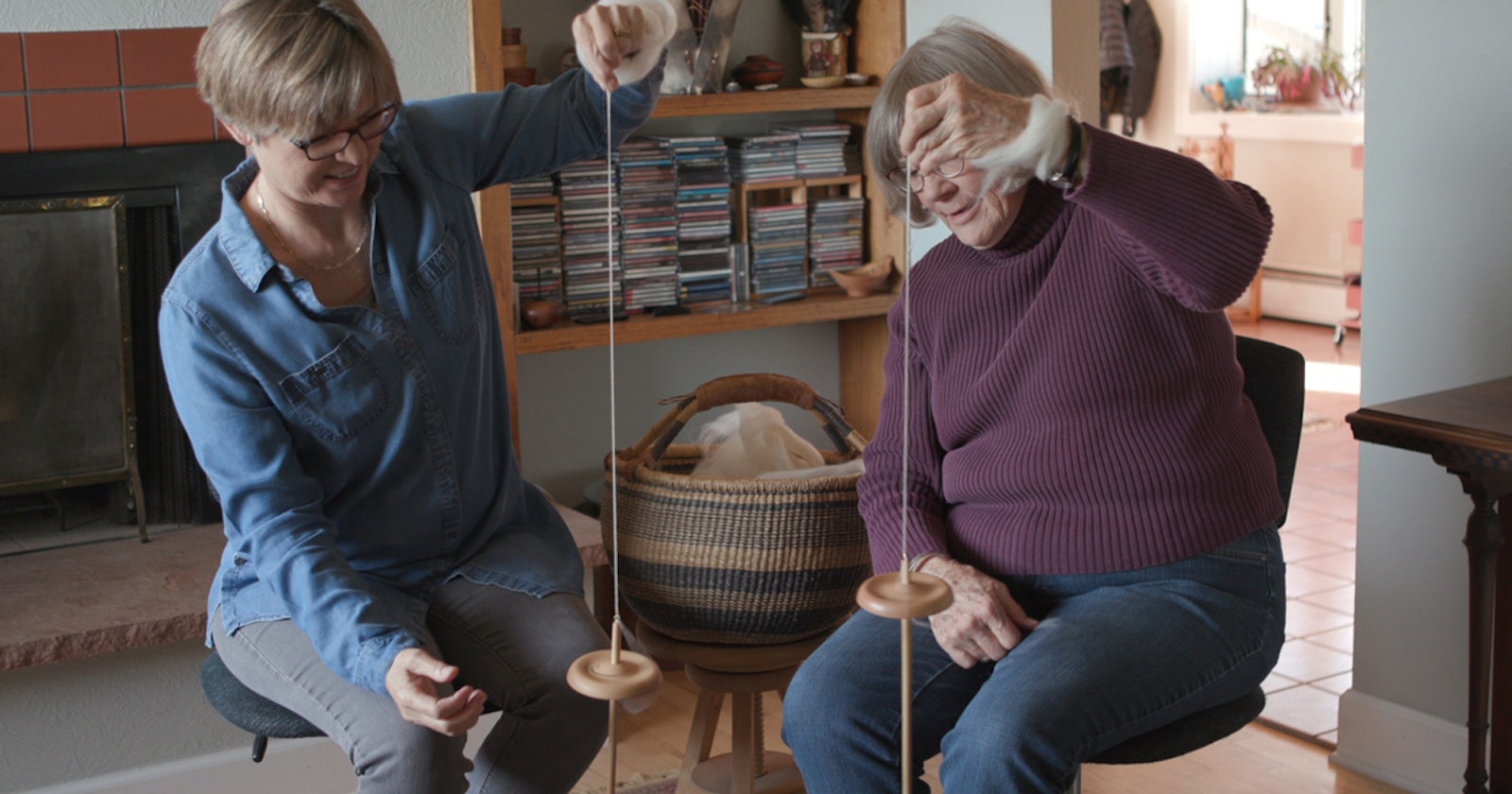For Abby Franquemont, it happened when she arrived in Chinchero, Peru, and the women of the local community put a spindle in her hand. “I was 5 years old and already alarmingly behind the curve,” she says in Respect the Spindle. At the other end of the spectrum, Deb Menz started as an adult; her husband saw the look in her eye when she first watched a handspinner, and he bought her a spinning wheel kit. She found a teacher who told her she’d put the wheel together wrong. She eventually learned to spin with Paula Simmons Green’s book Spinning for Softness and Speed in her lap—and went on to teach other spinners through her own books, Color in Spinning and Colorworks.
Maybe you know someone like Deb—who knows she wants to spin and needs a nudge to learn how. Maybe it’s someone you meet casually who takes an interest in your handspindle.
What Is the Great Aspinneration?
Interweave and Spin Off have cooked up a friendly program to teach a friend to spin (even if that friend is yourself). Inspired by the idea that spinners are great people and the world needs more great people, we reached out to teachers who specialize in bringing new spinners into the fold.
Maggie Casey welcomes us into her home and shares her best advice for getting new spinners started in The Spinning Teacher online workshop. Amy Clarke Moore, who edited Spin Off before she became a Montessori teacher, created a downloadable PDF with advice for teaching children and adults to spin.
The best part? We’re offering these resources completely free for you to use. Share them with friends, watch the video for your own inspiration, and pay it forward by spreading the love.
https://www.youtube.com/embed/1VCDJznKUhg
Gladly Learn, Gladly Teach
I don’t think of myself as a natural teacher. (I used to say I couldn’t teach a fish to swim.) Having demonstrated spinning at some events, I’ve realized that teaching is a skill that can be learned, just like spinning can. The same way Maggie taught me to spin, she can teach me to teach other spinners.


